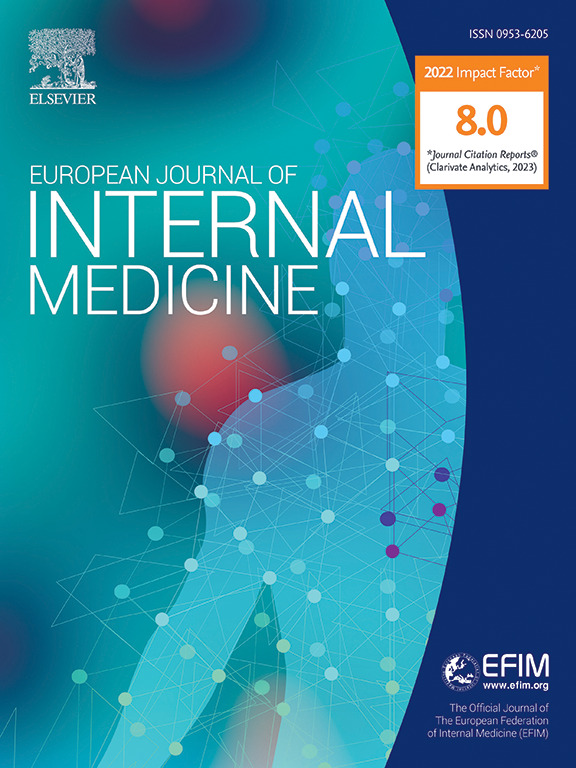How to promote healthy aging across the life cycle
IF 5.9
2区 医学
Q1 MEDICINE, GENERAL & INTERNAL
引用次数: 0
Abstract
The global rise in aging populations is challenging healthcare systems, especially in developed countries. Despite advancements in healthcare and living standards, the extension of lifespan has not been matched by an equivalent improvement in healthspan, leading to a higher prevalence of chronic diseases and disabilities in older adults. This review examines strategies to promote healthy aging throughout the life cycle, emphasizing the importance of a comprehensive strategy that integrates individual, healthcare, and environmental approaches.
Individual strategies include lifestyle factors like diet, physical activity, and social connections. Healthcare approaches focus on improving health literacy, vaccinations, and screenings. Environmental approaches aim to mitigate climate change, reduce pollution, and design longevity-ready cities. A comprehensive strategy combining individual approaches, public health measures, innovative policies, and community support is essential for helping populations live longer, healthier, and more independent lives. Looking forward, this will be complemented by personalized approaches, focusing on individual traits and biological backgrounds. The key to this lies in geroscience, which studies the biological and molecular mechanisms of aging and how they contribute to age-related diseases and functional decline, aiming to design targeted interventions to slow aging and improve quality of life. Artificial intelligence will play a key role in analyzing these complex factors and creating innovative solutions.
In conclusion, aging is shaped by various factors, requiring more than one solution. A combination of comprehensive and personalized strategies can bridge the gap between public health measures and personalized care, offering the scientific insights needed to slow aging and enhance quality of life.
如何促进全生命周期的健康老龄化。
全球老龄化人口的增加对医疗保健系统构成了挑战,尤其是在发达国家。尽管医疗保健和生活水平有所提高,但寿命的延长并没有带来健康寿命的相应改善,导致老年人中慢性病和残疾的发病率更高。这篇综述探讨了在整个生命周期中促进健康老龄化的策略,强调了综合个人、医疗保健和环境方法的综合策略的重要性。个人策略包括生活方式因素,如饮食、体育活动和社会关系。医疗保健方法侧重于提高健康素养、接种疫苗和筛查。环境方法旨在减缓气候变化,减少污染,设计长寿城市。一项结合个人做法、公共卫生措施、创新政策和社区支持的综合战略,对于帮助人们活得更长、更健康和更独立至关重要。展望未来,这将辅以个性化的方法,关注个体特征和生物学背景。关键在于老年科学,它研究衰老的生物学和分子机制,以及它们如何导致与年龄相关的疾病和功能衰退,旨在设计有针对性的干预措施,以减缓衰老和提高生活质量。人工智能将在分析这些复杂因素和创造创新解决方案方面发挥关键作用。总之,老化是由多种因素形成的,需要不止一种解决方案。综合和个性化战略的结合可以弥合公共卫生措施和个性化护理之间的差距,提供减缓衰老和提高生活质量所需的科学见解。
本文章由计算机程序翻译,如有差异,请以英文原文为准。
求助全文
约1分钟内获得全文
求助全文
来源期刊
CiteScore
9.60
自引率
6.20%
发文量
364
审稿时长
20 days
期刊介绍:
The European Journal of Internal Medicine serves as the official journal of the European Federation of Internal Medicine and is the primary scientific reference for European academic and non-academic internists. It is dedicated to advancing science and practice in internal medicine across Europe. The journal publishes original articles, editorials, reviews, internal medicine flashcards, and other relevant information in the field. Both translational medicine and clinical studies are emphasized. EJIM aspires to be a leading platform for excellent clinical studies, with a focus on enhancing the quality of healthcare in European hospitals.

 求助内容:
求助内容: 应助结果提醒方式:
应助结果提醒方式:


